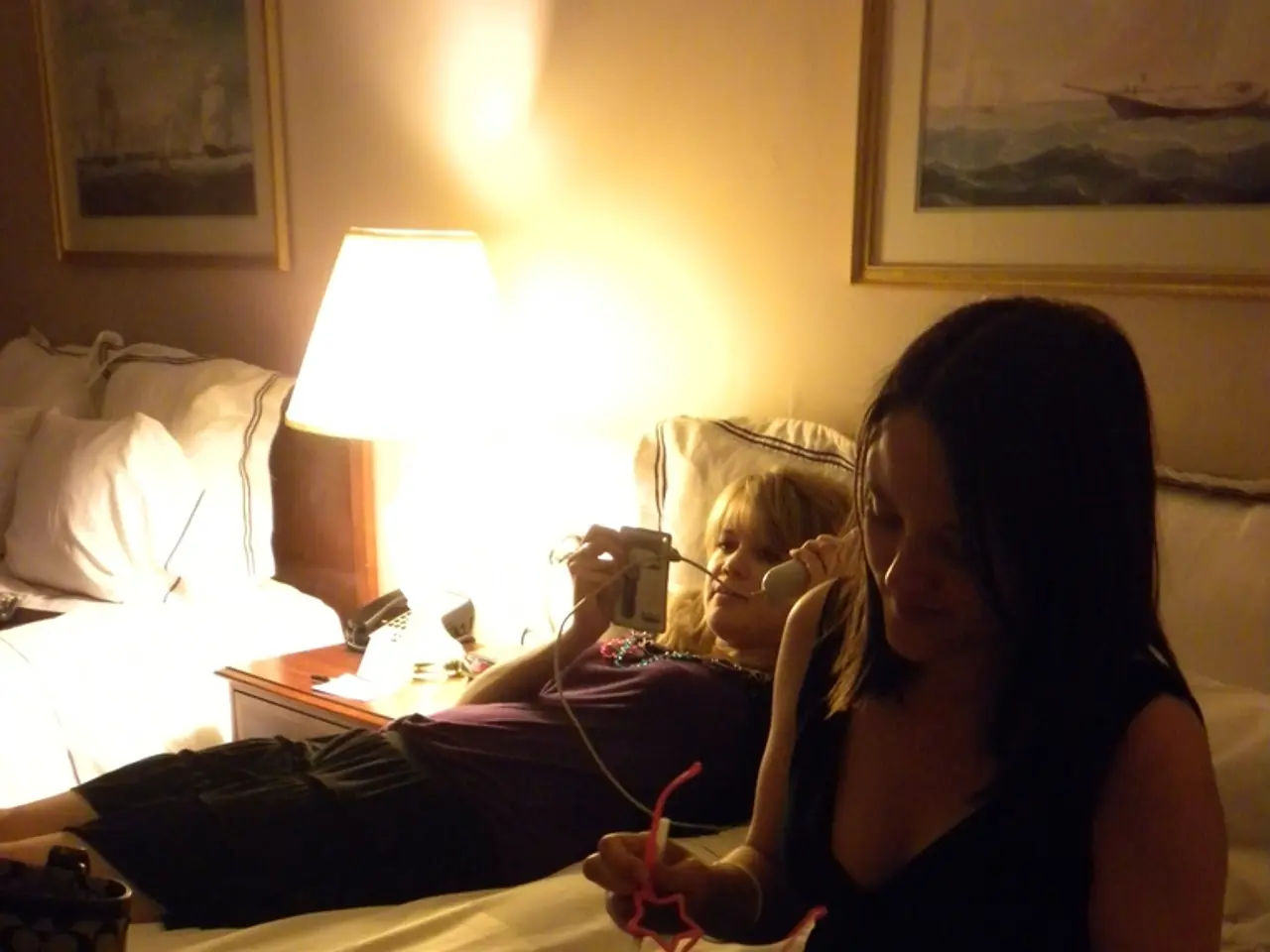Tossing, Turning, and Snoring: When Your Partner's Sleep Habits Keep You Awake
Disrupted Slumber due to Partner's Actions
Facebook Twitter WhatsApp Email Print Copy link
Are you finding yourself waking up to the reverberating sounds of a sawing log, rumbling, and grunting next to you? If that sounds all too familiar, you're not alone - especially if you're a woman.
Sleep specialist Kneginja Richter often spots women seeking advice for shared sleep issues. "They prefer to sleep in the marital bed, but struggle due to their partner's snoring or restless movements," says Richter, the chief physician at CuraMed day clinic in Nuremberg. The next morning, the affected often sport dark circles, yawn a lot, and feel lethargic - they've not enjoyed a deep, restorative sleep.
Incompatibility in the Sleep Department
This disconnect can be explained by studies highlighting the significant role gender plays in the types and frequencies of sleep issues. Women are more susceptible to being easily awakened and are more sensitive to noises, particularly during stages like puberty, pregnancy, motherhood, or menopause. Hormonal fluctuations are the culprits, according to Richter.
Men, on the other hand, are often plagued by obstructive sleep apnea, characterized by nocturnal pauses in breathing and snoring. This can be attributed to anatomical factors such as a larger neck circumference and more visceral belly fat in males.
Bed Wars: A Recipe for Disaster?
One partner's snoring, the other's annoyance - sounds like a recipe for conflict, right? Not necessarily, says Richter. Studies show that women typically feel more comfortable sleeping together, even if it hampers their sleep quality.
Love Hormones to the Rescue?
A possible explanation lies in the "cuddle hormone" oxytocin. This neurotransmitter is released during the REM sleep phase, especially with familiar body contact. In couples with a strong bond, their REM sleep phases might synchronize.
"That's likely why women, despite sleep suffering, still opt to sleep together, thanks to the effects of the cuddle hormone," says Richter, who is a spokesperson for the German Sleep Research Society and Sleep Medicine Society (DGSM).
Finding a Balance
But love hormones can only do so much when it comes to sleep frustration. If you want to tackle the problem, what's worth trying? "Using earplugs to block out snoring would be the simplest, cost-effective option," advises Richter. Also, consider going to bed and falling asleep earlier than the disturbance.
If these solutions don't offer sufficient relief, a new, roomy bed with plenty of space might be the solution. But, if your partner's movements continue to disrupt your sleep, opting for separate mattresses within the same room could work better. If one partner rolls around, the other will notice less.
However, the arrangement change may not be enough for some. In such cases, at least one wall between sleepers can help - that is, separate sleep spaces. Despite initial reluctance from some couples, early data suggests that separate sleep arrangements can improve sleep quality, well-being, and even sexual satisfaction - all of which can have a positive impact on the relationship.
Source: ntv.de, Ricarda Dieckmann, dpa
- Sleep Disorders
- Relationship
In brief, addressing shared sleep issues related to snoring or restlessness can significantly benefit both sleep quality and relationship health. separate beds may provide a solution, though they might cut down on physical closeness, which supports emotional connections. Solutions like communicating sleep needs, cuddling before sleep, and the Scandinavian sleep method can help couples find a balance between restorative sleep and emotional closeness. Sleep divorce can be adaptable to a couple's unique needs.
- The disconnect in sleep patterns between partners, such as snoring or restless movements, can have a negative impact on both sleep quality and relationship health.
- To address these issues, couples might consider solutions like separate beds for increased space, communicating sleep needs, cuddling before sleep, or adapting to the Scandinavian sleep method, all of which can help find a balance between restorative sleep and emotional closeness.








